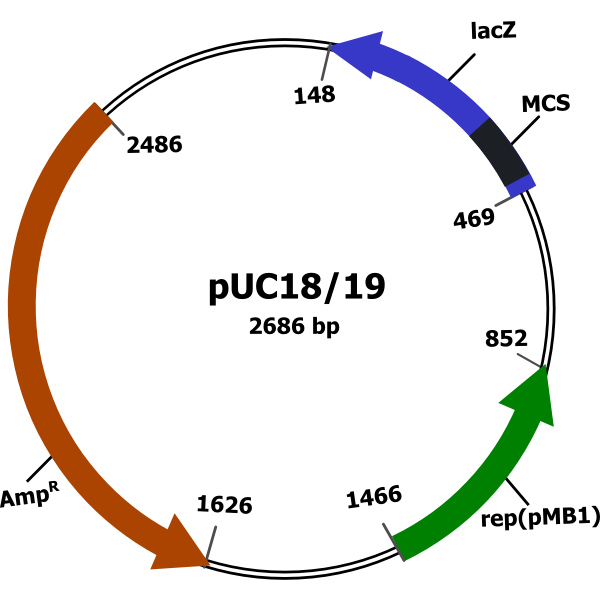
What is restriction mapping?
Answer
370.5k+ views
Hint: Restriction enzymes are an important part of restriction mapping. These enzymes are used for cleaving DNA strands at a characteristic base sequence. The first restriction enzymes were isolated from Escherichia coli and were called EcoRI.
Complete answer:
Let us start by knowing about restriction mapping. It is a method by which a map is used in an unknown segment of DNA, which is then cut into several pieces using endonuclease. After which the locations of the breakpoints are identified. The sites at which the restriction enzyme or endonuclease cuts the DNA are known as restriction sites. Using the method of electrophoresis, the pieces of DNA are separated with respect to their sizes.
A common method for making a restriction map takes into consideration the digestion of the unknown DNA sample in three different ways. In this, two portions of the DNA sample are digested individually using different restriction enzymes while the third portion is double digested using both the restriction enzymes at the same time. In the next step, through electrophoresis the fragments of DNA are separated according to their size. The total length of all fragments in each digestion should be equal. We know that the length of each DNA fragment depends upon the positions of its restriction site, so now each restriction site can be mapped with respect to the length of the fragment.
Below is the final picture of the DNA segment which shows the area of the restriction site known as a restriction map.

Note-
Restriction mapping is of importance for the smaller genomes like viruses and bacteria. If the same is used for larger genomes then the restriction of digestion will lead to a number of DNA fragments of the genome. At the time of separation in agarose gel it becomes impossible to separate the DNA fragments as they look like discrete bands.
Complete answer:
Let us start by knowing about restriction mapping. It is a method by which a map is used in an unknown segment of DNA, which is then cut into several pieces using endonuclease. After which the locations of the breakpoints are identified. The sites at which the restriction enzyme or endonuclease cuts the DNA are known as restriction sites. Using the method of electrophoresis, the pieces of DNA are separated with respect to their sizes.
A common method for making a restriction map takes into consideration the digestion of the unknown DNA sample in three different ways. In this, two portions of the DNA sample are digested individually using different restriction enzymes while the third portion is double digested using both the restriction enzymes at the same time. In the next step, through electrophoresis the fragments of DNA are separated according to their size. The total length of all fragments in each digestion should be equal. We know that the length of each DNA fragment depends upon the positions of its restriction site, so now each restriction site can be mapped with respect to the length of the fragment.
Below is the final picture of the DNA segment which shows the area of the restriction site known as a restriction map.

Note-
Restriction mapping is of importance for the smaller genomes like viruses and bacteria. If the same is used for larger genomes then the restriction of digestion will lead to a number of DNA fragments of the genome. At the time of separation in agarose gel it becomes impossible to separate the DNA fragments as they look like discrete bands.
Recently Updated Pages
Master Class 11 Accountancy: Engaging Questions & Answers for Success

Express the following as a fraction and simplify a class 7 maths CBSE

The length and width of a rectangle are in ratio of class 7 maths CBSE

The ratio of the income to the expenditure of a family class 7 maths CBSE

How do you write 025 million in scientific notatio class 7 maths CBSE

How do you convert 295 meters per second to kilometers class 7 maths CBSE

Trending doubts
Which are the Top 10 Largest Countries of the World?

Differentiate between homogeneous and heterogeneous class 12 chemistry CBSE

What is a transformer Explain the principle construction class 12 physics CBSE

Draw a labelled sketch of the human eye class 12 physics CBSE

What are the major means of transport Explain each class 12 social science CBSE

What is the Full Form of PVC, PET, HDPE, LDPE, PP and PS ?




